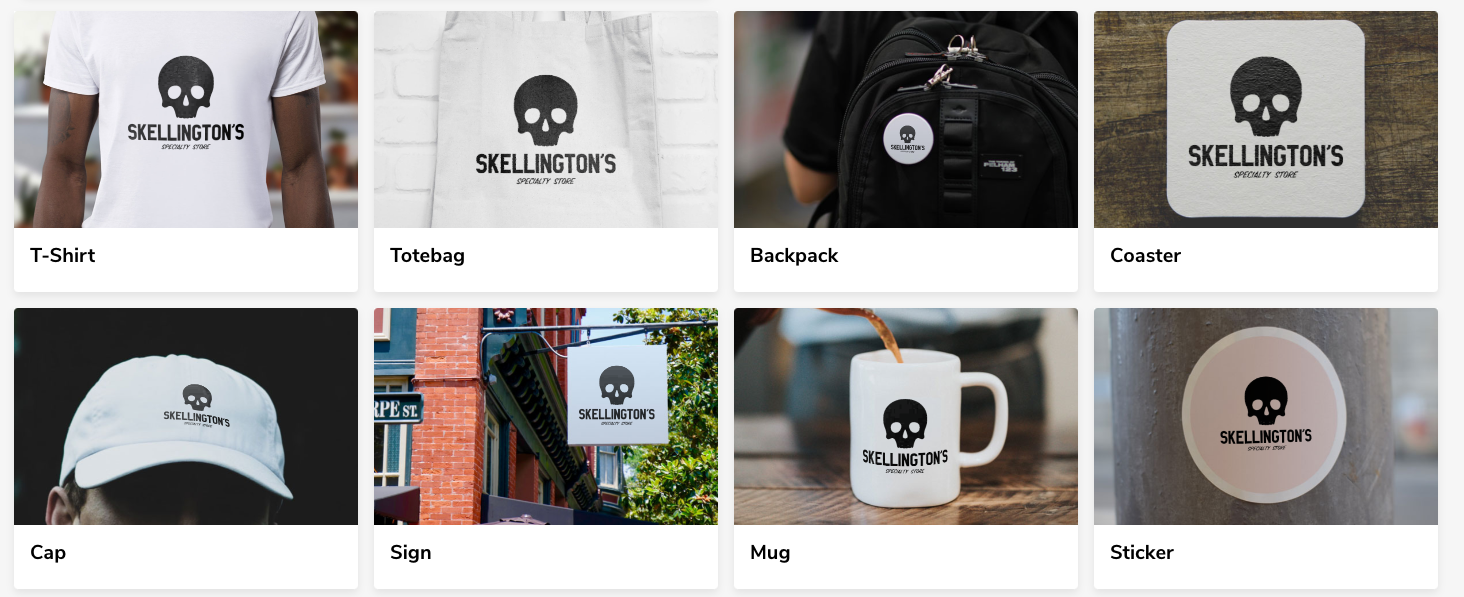
There may be a thousand ways that you found your way to this article, but the truth of the matter is, something has you wondering if you need to rebrand your business or just revamp your online presence based on the brand you have.
No matter what brought you to this article, here you’ll find answers to your questions about when you should rebrand versus when you should revamp your current brand.
We’ll start off with how to know if something is amiss with your current brand. Then, we’ll discuss how to decide if you need to rebrand or if revamping your current brand will do the trick.
How to know if your brand isn’t hitting the mark
One of the best ways to know whether or not your brand is saying what you want it to about your business is to ask.
You’ve likely seen or completed a branding survey at some point in your life. You just may not have known that’s what it was. Big companies often put branding surveys out when they’re getting ready to roll out a new product, check on how their product is doing against the competition when it comes to recognition, or when they’re thinking about rebranding themselves.
You may not be a large corporation, but you can do the same thing.
Conducting a brand identity survey
Conducting a brand identity survey is one of the easiest ways to find out what your customers really think of your brand.
Start by reaching out to your current email marketing subscribers and asking them to take a brief survey (get some sample questions here). After that, think about using your social media pages to invite additional customers and contacts to participate in the survey.
Quite often, people need to be incentivized to take a survey, so think about offering a special discount, free item, or another incentive for people to participate in your survey.
When sending your survey out into the world, keep an open mind. You will likely get both negative and positive feedback, and often, it is the negative feedback that is the most helpful.
When to rebrand
Rebranding can be a lot of work. It involves changing not only the entire visual look and feel of your brand, but it also includes changing your messaging. Usually, a rebranding is worked on behind the scenes for months or even years and then rolled out all at once. Like the flip of a light switch — or at least it’s made to appear that way.
That may sound daunting. However, if the feedback you’re getting from your brand identity surveys is in direct contrast with what you want your brand to be, it’s definitely time to rebrand.
Of course, there are other times that you should consider rebranding. Here are a few:
- There is a complete disconnect between what you want your brand to be and what current and potential customers think your brand is.
- Your business’s culture has changed since it started
- Your business has changed in ways that make it completely different from what it was when you started out, but your branding has not changed.
- Either your business’s capabilities, holdings, platforms, or another major component of your business has changed in such a substantial way that the business is no longer what it was
- New ownership or leadership is looking to change the way the company does business
In other words, you should consider rebranding when you want to completely change how your business is perceived by others.
When to revamp your current brand
In contrast to rebranding, revamping is a slower, methodical process. When I say “revamp” here, I’m talking about taking what works with your brand and building upon it. Revamping your online presence to strengthen your brand is a process where you might keep your logo, colors, etc. (if they work) but then revamp your social media, email marketing, and even your website in order to build a cohesive voice that consistently reflects the brand you want the world to see.
Generally, you’ll want to revamp your brand if:
- The overall perception of your brand is close to what you want it to be, but isn’t quite there yet — survey participants had the correct perception of your brand, but their responses revealed a lack of specificity
- Your branding lacks clarity — survey participants were unable to pinpoint exactly what your brand stands for, or there were lots of different opinions on what it stands for
- Your different marketing platforms are disconnected or discordant with your brand — each channel has a different voice rather than one voice with different messages
- The brick-and-mortar location doesn’t match up to your online presence, i.e. your store is fun, casual, inviting, and full of color, but your website is formal, stark, and stand-offish.
You’ll know if either of the above is true if the feedback from your brand identity surveys varies depending on what aspect of your brand the participant is reviewing. If those who answer questions based on your website tend to understand your brand correctly, but those who answer questions based on your Facebook, Instagram, or other social media channels are completely off from what you want your brand to be, then it’s time to revamp your brand.
Also, if the answers to your survey suggest that participants aren’t clear on what your brand is, then you may be able to revamp your current brand rather than rebranding altogether.
Revamping a brand
As I mentioned previously, revamping a brand is a process of finding out what works with your current branding and building upon that.
While the answers to your survey questions can come in handy here, sometimes it’s best to take a hard look at what your business stands for, as well as its culture, and decide what aspects of your business you want to express to potential customers.
Yes, I said potential customers. Your current customers already have an idea of what your brand is. After all, they are doing business with you.
When it comes to revamping your brand, you want to think about who you want to attract to your business. For example, if your current customer demographic is mostly made up of 18-24 year-olds, but your business is really geared towards the 25-45 years-old demographic, then you might want to rethink either what you’re putting out there, or, better yet, where you’re putting it out.
How to revamp a brand
In order to revamp a brand, I suggest starting with your website. Your website is the hub of your online marketing strategy. It is where all things online should point to. Therefore, it is the most important aspect of your online presence. Do a website checkup to make sure that your website reflects your brand appropriately, clearly, and consistently.
After you’ve been through your website, take a good look at your email marketing. Make sure that what you’re sending out to your current subscribers matches the branding you’ve done on your website. Besides making sure that things like logos and colors match, make sure the overall feel of your email marketing matches as well. If those two are properly aligned, then it’s time to take a look at your social media platforms.
When it comes to social media marketing, the first thing to check is whether or not you’ve been using the right social media platform to reach your target audience.
If you’re not sure which social media platform(s) are right for you, check out our article and infographic on the Best Social Media Platforms for Business.
Once you’ve figured out which platforms fit your business best, choose one platform to be your primary social media channel and then plan to use others to increase your reach. This way, as you revamp your brand, you can focus on your primary channel first and then work your way through your other chosen platforms according to what you have deemed primary, secondary, or tertiary channels.
Consistency is key
Whether you’re rebranding or revamping your current brand, the most important thing is brand consistency. This goes for your brick-and-mortar location(s), your website, social media channels, email marketing, advertisements, and even your product packaging.

This enables both current and future customers the ability to instantly recognize your brand no matter where they see or experience it. So, how do you achieve consistency in your branding?
Use only one voice
Starting out, most small businesses have just one employee — the owner. As a business grows, however, employees are brought on, and eventually, some of the marketing gets handed down or picked up by various employees. The problem with this is that you end up with several different voices sending out different messages, and the brand can get muddied.
To keep your brand consistent, follow the lead of The Concord Cheese Shop and centralize all of your online marketing efforts. Use one device for creating online marketing, one type of filter on your images, and one person who edits, schedules, and distributes all of your content.
Be deliberate
Don’t put stuff out there just to be putting something out there. The best way to ensure that your online marketing efforts bear fruit is to put quality content out there — on a consistent basis.
When creating and disseminating content, it’s advisable to stick to the 80/20 rule. 80% of your content should be informative or entertaining while only 20% should be asking for the sale (or donation if you’re a nonprofit). This 80/20 principle keeps your customers opening your emails and engaging with you on social media — further building your brand.
Stick to it
Once you’ve gone through all the work to rebrand or revamp your brand, keep up with it by sticking to the following:
- Plan, create, and schedule online marketing in advance
- Post, email, and interact with your customers on a regular and consistent basis
- Implement the 80/20 rule across all platforms and stick as closely to it as possible
- No matter who in your company is creating the content, make sure you have one person that edits and approves everything to make sure your brand has only one voice
Following these guidelines will not only help you build or revamp your brand but it will also help you build relationships, build your business, and keep your brand top of mind for both your current customers and your future customers.




